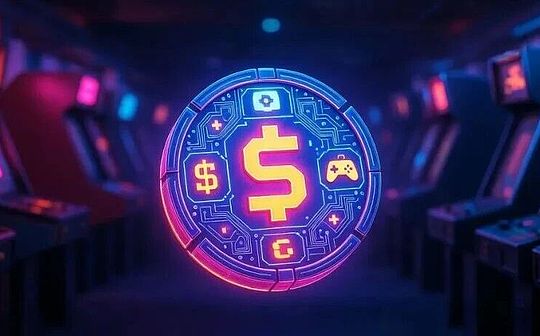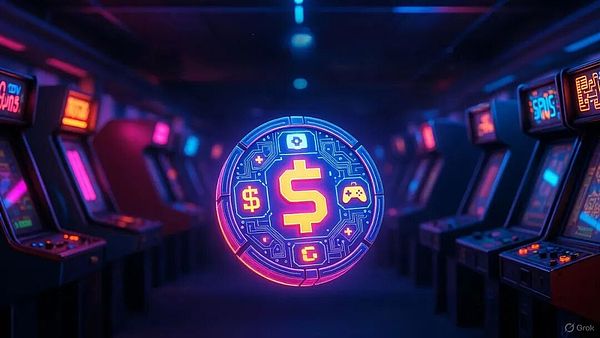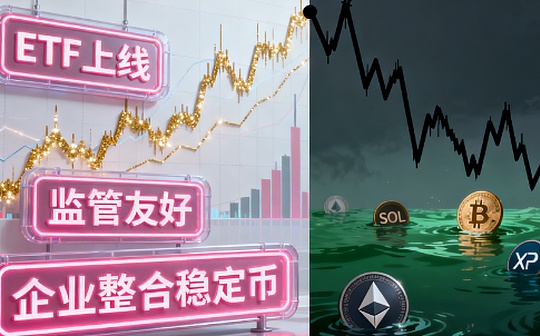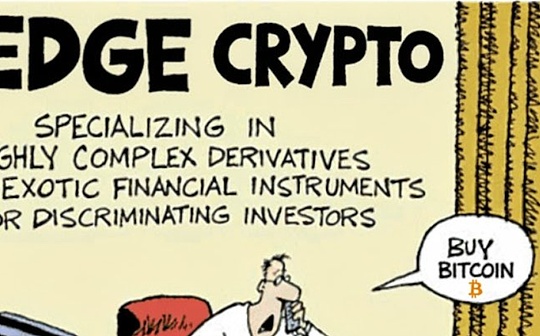
Author:a16z,Scott Duke Kominers, Eddy Lazzarin, Miles Jennings, Tim Roughgarden

Preface
We recently put together a new, comprehensive taxonomy of token types, including network tokens, collectible tokens, and memecoins.Of the seven types we identified, arcade tokens are the least known and most undervalued: a token whose value is relatively stable within a specific software or product ecosystem and is typically managed by an issuer (such as a company).
Essentially, arcade tokens are a blockchain-based form of asset, similar to some of the assets people are already familiar with: things like airline miles, credit card points, in-game digital coins, and more.What they have in common is that they are currencies that circulate within the market economy and support its operation: for example, frequent flyer miles and reward points can enhance brand loyalty and can be used to purchase air tickets and upgrades; digital gold coins allow you to buy and sell items in video games.
While businesses have used such assets for decades, almost all previous cases have existed in centralized databases, which limits ownership, transferability, and user choice.Arcade tokens based on public blockchains are different. They are open, interoperable and composable, which gives them a series of new market design advantages.
This article aims to answer the most common questions we receive about arcade tokens: what they are, what they do, why they are valuable, how developers use them, the design tradeoffs they involve, and the opportunities they bring.
What are Arcade Tokens?
Technically speaking, arcade tokens are essentially digital currencies used in their associated application ecosystems – with supply and demand flexibly managed to maintain price stability.You can think of them first as currencies in the digital economy.
So, where does the term “arcade token” come from?Whether you’ve been to an arcade or not, you’re probably familiar with the concept: You walk in, exchange cash for tokens (usually physical tokens), and then use those tokens to play a few games of Galaga, Gator Panic, or another of your favorite games.These tokens allow you to participate in the arcade’s economic system.
The arcade metaphor clearly illustrates how these tokens work: arcade tokens have a relatively stable value within the economy to which they belong—either within a single service or across multiple services.The relative stability of the value of arcade tokens distinguishes them from other types of tokens, such as those whose value is derived from the underlying asset (such as an asset-backed token or a collectible token), the operation of a decentralized network market (such as a network token), or a speculative investment in a specific entity (such as a company-backed token or a security token).
Despite their funny-sounding names, arcade tokens are powerful programmable economic primitives—and they hold the key to unlocking new frontiers in the cryptocurrency design space.
What aren’t arcade tokens?
Again, the most substantial difference between arcade tokens and other types of tokens is that arcade tokens are not intended for investment or speculation.Unlike people who typically buy network tokens or security tokens hoping to earn a return on their investment, arcade tokens are meant to be spent.
People sometimes refer to arcade tokens as “utility tokens” because they are designed to provide utility functionality.We avoid using this label because it implies that other types of tokens lack utility, which is not the case.Other names for arcade tokens include “points” (although in everyday parlance, this usually means that the relevant records are kept on a private ledger rather than a public blockchain) and “loyalty token” (this only refers to one specific application).
This doesn’t mean that the value of Arcade Tokens will never change – as we explain below, it’s possible that the price at which Arcade Tokens are purchased can change slightly over time.But arcade tokens typically have an unlimited supply at current prices, and they do not offer, promise or imply financial returns.This means that they are generally not suitable as investment products and therefore are generally not covered by U.S. securities laws.
This doesn’t mean that the value of Arcade Tokens never changes – as we’ll detail below, the purchase price of Arcade Tokens can fluctuate slightly over time.But arcade tokens typically have an unlimited supply at current prices, and they do not offer, promise or imply any financial return.This means that they are generally not suitable as investment products and therefore are generally not subject to U.S. securities laws.
What are arcade tokens used for?Why should developers consider using them?
Arcade tokens enable developers to print and distribute value in the digital economy.Crucially, this ability to create and distribute value incentivizes user behavior, drives early growth, and generates network effects—without relying on external capital or speculative demand.
This principle is simple and fits well with the game arcade example: if you run a game arcade, you definitely want to be able to control the supply of tokens so that their issuance is consistent with customer demand.For example, if the number of customers doubles on a given day, it might be more helpful to issue roughly twice the number of tokens so that all customers can play the games they want (assuming there are no capacity limits, of course).Why turn away customers when you can issue enough tokens?
You may also need to be able to adjust your prices: If you make major improvements to the arcade itself—such as doubling the number of games, introducing fancier, more feature-rich machines, or offering more generous prizes—you might increase the price per token.In short, you need the flexibility to control your economy in order to better balance supply and demand (plus demonstrate the value of your arcade to customers).
In addition to optimizing day-to-day operations, this financial control helps build lasting connections with your most loyal customers.For example, you can issue bonus tokens to your most active players.What’s more, when people end the day with some tokens left in their pocket, it incentivizes them to return to your arcade because those tokens can be spent there.
More formally, Arcade Token supports:
-
Dynamic Pricing and Promotions: Arcade token issuers may adjust the token price, adjust the token-denominated purchase price, or both.This allows them to offer discounts on goods or services during periods of low demand, or reward spending during peak periods.
-
network effect: Similar to airline miles and credit card points, users who earn or hold tokens are more likely to remain loyal to the brand.The value of this established user base will encourage merchants, developers and other service providers to participate more in cooperation, thereby increasing user value – this is a typical platform network effect.
-
Incentives and Loyalty Rewards: Arcade token issuers can offer rewards and other benefits to customers who complete specified actions.They can also leverage issuance rights to reward network participants when they accept or redeem tokens.All of this reinforces the network effects described earlier.
-
economic control: Arcade token issuers can burn tokens upon redemption, track liabilities on-chain, and implement monetary policy similar to a central bank—all while keeping supply and pricing within predictable limits.
How do arcade tokens work?
Analysis of economic dynamics
The economic dynamics of arcade tokens set them apart from other types of tokens.Rather than giving the holder ownership of the underlying ecosystem, Arcade Tokens give the holder the right to access or use a specific application or service; crucially, their market value is designed to be programmatically limited.This does not mean that arcade tokens must be pegged to the price of fiat currencies like stablecoins; it simply means that issuers can use certain mechanisms to set a price floor, and often more importantly, a price ceiling.
Arcade tokens are usually purchased freely at a pre-set price.Think of the token vending machines in the promenade arcade: You walk up and put in a dollar, and the machine gives you four tokens, each costing 25 cents.This token vending machine, often referred to as a “faucet” or “valve,” effectively sets a price cap that the market value should never exceed.Arcade tokens therefore have no investment value: they are for consumption, not speculation.
The value of a token can be assessed based on its redeemable value through any “consumption mechanism” (i.e. the mechanism by which the token is withdrawn from circulation).In arcade games, the “consumption mechanism” refers to the game’s “coin slot” – the one that requires coins to be played.If a token is required to play a game, it should be worth 25 cents.Alternatively, the arcade could set a buyback price slightly lower than the token’s initial price; this way, the issuer is guaranteed to always buy back those 25-cent tokens at 20 cents each.This sets a price floor below which the token price should not fall.

Consider the impact of these parameters on the market: Would you pay a dollar to buy a 25-cent coin from a speculator if you knew you could buy the same coin from a faucet (or vending machine) for a quarter of the price at any time?绝对不会——这根本不合理!(Or, it’s not a good deal at all.) A person who is moving to another city might stand in front of an arcade and try to sell his remaining 25-cent tokens for 22 cents each, but no one will pay more than 25 cents for them.So, while some may choose to sell their arcade tokens at a discount (for example, if they are leaving the ecosystem entirely), the price of the token should remain relatively stable at any given point in time.
All of these non-speculative factors make arcade tokens particularly suitable as the basis for a controlled market economy.It’s important to note that this doesn’t depend on whether the use of Arcade Tokens is narrow (limited to a single app or service) or broader – they’re simply a result of the “faucet/redeem” design of Arcade Tokens.(Continuing with the arcade example: Even if the local grocery store owner is a video game enthusiast and chooses to accept tokens for local arcade games rather than cash payments, there is no reason to pay more than 25 cents per token if you can just walk up to the arcade and buy tokens for 25 cents.)
Why not just accept stablecoins as payment?
Arcade tokens have some conceptual overlap with stablecoins—both are designed to facilitate economic transactions while maintaining a relatively stable value.But arcade tokens offer developers greater flexibility.Issuers can print arcade tokens on demand (although issuers still need to track the “shadow” value of these tokens on their balance sheets—that is, what the arcade tokens are worth when redeemed).Issuers can then use these tokens to provide grants and subsidies to users, developers and other network participants.Additionally, these tokens encourage participants to stay within a specific economic system rather than spending their funds elsewhere.(There’s a reason airlines issue “miles” rather than direct cash back to frequent fliers; those miles must be used to purchase future flights.)
Arcade tokens also provide developers with more monetization options.Issuers can sell tokens directly to users (with a fixed or dynamic price), package them into subscription packages, or distribute them through promotions.When a network of partners agrees to accept a certain arcade token, they can set up cross-promotion and affiliate marketing models — strategies that expand each partner’s reach without requiring outside funding.
Crucially, arcade tokens also give issuers granular control over the flow of value within the economy:
-
restrict portability (e.g. only within an application or between whitelisted addresses),
-
set depreciation or expiration dates (encouraging prompt use and reducing hoarding), and
-
Tie redemption to specific goods or services (align utility with economic intent).
These features help reinforce the token’s value as a medium of exchange rather than a speculative asset, and can be encoded programmatically on-chain.In short:Arcade tokens can help kick-start growth, encourage user participation and manage the workings of the internal economy while giving their maintainers a level of control.
The power of interoperability
As we’ve already described, arcade tokens issued on public blockchains are similar to loyalty points or airline miles – but they have one major difference: they’re on-chain, which means they can be open, interoperable and composable.
Unlike traditional loyalty systems that lock value within a closed ecosystem, blockchain-based arcade tokens can be shared, accepted, and redeemed among multiple participants without permission—even in theory between competitors.Portability is a big advantage: in this model, users can transfer their loyalty to different services, and status can be transferred easily (unlike today’s airlines’ cumbersome “tier matching” process, for example).This portability encourages market participants to compete on product and service quality rather than purely pursuing user lock-in, and can transform fragmented loyalty programs into public goods.
The $FLY token issued by Blackbird, a company founded by the founders of Resy and Eater, is one of the best arcade token examples on the chain to date.The token creates a loyalty program for restaurants similar to Starbucks Rewards or McDonald’s Membership Rewards.This may sound familiar, but it’s unique: the same token can be used at multiple different restaurants.Customers earn tokens when they spend money at restaurants within the Blackbird network, which can then be redeemed for discounts and other offers at any participating restaurant.Since the underlying protocol is based on the blockchain, all of these operations can be completed without direct interaction between restaurants.Just as a rewards program at an individual restaurant builds customer loyalty, $FLY builds loyalty across an entire network of restaurants simultaneously.
Consumers benefit from broader utility; businesses benefit from shared network effects.
The result is cooperative competition (rather than traditional competition): for example, your neighborhood coffee shop and Starbucks can both benefit from accepting the same token.While at first it may sound like neither coffee shop wants this to happen, a shared membership program enabled by arcade tokens could actually benefit both parties.Arcade tokens allow the Starbucks and local coffee shop experiences to complement each other, so that visits to either receive offers that enhance the value of both parties.For example, if one redeems arcade tokens for a free mocha, the value a customer gets for their coffee purchase at both stores increases.Such offers can increase customer loyalty to the coffee chain network and encourage customers to spend a larger proportion of their budget on coffee.
This cooperative competition can bring more total surplus to the network, which can be divided among the suppliers in proportion to their sales.In other words, instead of competing for a piece of the pie, make the pie bigger.
设计上的权衡(和机遇)
街机代币并非适用于所有项目。Where a speculative asset is needed, arcade tokens are inappropriate.For example, a layer one blockchain network with its own network token typically does not require arcade tokens to function properly.
But for many projects — especially those with consumption as their core economic model or integration with the physical world — arcade tokens can be an attractive option.它们具有以下优势:
-
price stability: Achieved through price upper and lower limit mechanisms and control of issuance.
-
Ease of use: Intuitive and stable value to help users understand their consumption.
-
Accounting Clarity: Their cost on the balance sheet is the opportunity cost of their redemption – no more, no less.
-
control: Issuers can manage them in a manner similar to a central bank.
We also see that arcade tokens are increasingly becoming complementary or precursors to network tokens.Blackbird’s $FLY token allows users to redeem it at any partner restaurant, and this redemption is managed by a purpose-built blockchain layer powered by the network’s token.For example, a decentralized computing network could use network tokens to provide security and incentives among computing providers, while using arcade tokens to build network effects among its user base.Alternatively, a marketplace platform could use arcade tokens to induce user participation, and then gradually introduce network tokens as the operating protocol decentralizes.In these cases, arcade tokens can serve as a way to get started, catalyzing early demand and helping the network gain initial user growth before the network moves to a more decentralized system in the long term.
Regulatory Outlook
An example of an early arcade token is Quarters, from the blockchain-based gaming platform Pocketful of Quarters.Players can use Quarters tokens to gain access to features and rewards in participating games.Regarding the argument that arcade tokens are not investment assets, Pocketful of Quarters received a no-objection letter from the U.S. Securities and Exchange Commission (SEC) in July 2019.The SEC said in its letter that it recognizes people using Quarters only to participate in gaming, not speculation or investing.
Despite this positive precedent, Quarters’ no-objection letter and many states’ regulatory mechanisms remain flawed.For example, they are skeptical of interoperability, viewing it as a bug rather than a feature.Their rationale stems from the mistaken belief that once interoperability exists, assets become easier to trade and thus take on the characteristics of financial instruments.This view ignores the fact that trading demand still depends on whether the asset has room for speculative upside – which, as we explained before, arcade tokens typically do not.At the same time, interoperability is one of the most exciting advantages of on-chain arcade tokens, which can bring many benefits to consumers, including reducing transaction friction and increasing choice.
Clever design can alleviate regulatory concerns.街机代币无需局限于封闭网络。Things like price caps, faucet-sink models, and usage-linked redemption mechanisms allow issuers to programmatically curb speculation.Consumers also benefit from interoperability because it improves user experience, fosters competition, and creates broader network effects—ultimately fostering innovation and delivering greater value to users without relying on financial speculation.
While arcade tokens are not suitable for every scenario, they are a vital component in the evolution of crypto networks.Just as stablecoins have opened up new business models and network tokens have enabled decentralized value sharing and governance, arcade tokens can also promote the development of the digital economy on a large scale.
As regulatory policy becomes increasingly clear, we expect more developers and users to recognize the benefits of arcade tokens as more projects (including those that are not crypto-native) explore their uses.






